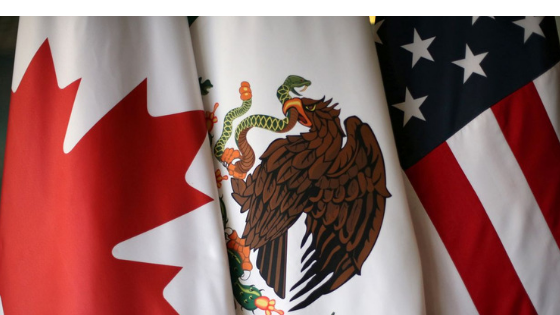The US and Canada have reached a new trade deal, along with Mexico, to replace the current North American Free Trade Agreement (NAFTA). The new United States-Mexico-Canada Agreement (USMCA) announced on Sunday rescues a $1.2 trillion open-trade zone that was on the brink of collapse after nearly a quarter century. The deal has 34 chapters and is intended to last 16 years and be reviewed every six years.

What is new in the new deal?
The Auto Sector
The United States-Mexico-Canada Agreement (USMCA) is the first trade deal between major auto-producing nations since the original NAFTA that sees the Regional Value Content (RVC) for automotive production go up in the region. A higher RVC in vehicles means that if an automaker wants to sell to a consumer in the 3 countries, it needs to source more of its content from those 3 countries.
In the USMCA, the vehicle RVC level rises from 62.5% to 75% – a 20% increase. That means more local activity and jobs. To get to the USMCA RVC, an automaker will track the local content in 29 automotive parts categories. To be eligible, the RVC of those automotive parts must be 60%.
The USMCA also expands the list of categories and raises the automotive parts RVC as high as 75% – a 25% increase from 60% – through the supply chain
The North American automotive market is approximately 21 Million units annually and is the most sought-after consumer market in the automotive world. Raising the thresholds to access it, benefits companies that have invested in plants and people in the USMCA.
While the cost of an automobile may increase marginally if manufacturers are required to source more supplies from within the NAFTA region (rather than from the cheapest global sources), the benefit will be more investment in Ontario and in many US and Mexican States and less in places that only sell to us, but do not buy from us.
In auto, the USMCA addresses the protectionist needs of the current administration but wraps in its purview Canada and Mexico as primary partners.
Side agreements for exemptions on tariff threats remain the challenge of 2018. Canada and Mexico achieved an insurance policy on this which is worth noting. All vehicles in NAFTA will need to meet a minimum threshold of 40% being made by workers making at least $16 per hour.
The US is committed to raising the cost of importing automotive goods there. The 232 tariffs and WTO/MFN process will ensure it. Canada and Mexico negotiated exemptions from these at production levels that materially outpace export growth models to the US over the next 5-10 years. Specifically, Canada will be permitted to ship 2.6 million vehicles annually and $32 Billion in automotive parts to the United States tariff-free.
Ending that process with a deal that increases investment and more competitive market access for Canada is extraordinary.
Dairy, Egg and Poultry Markets
The new deal would give American farmers greater access to Canada’s dairy industry, worth about 3.6% of Canada’s current dairy market, according to the Dairy Farmers of Canada. The U.S. had negotiated access worth about 3.25% of Canada’s market in the Trans-Pacific Partnership, but then withdrew, leaving that share of Canada’s market now available to dairy products from the countries that remain in the agreement, like New Zealand and Australia.
What has been the reaction to USMCA?
The Canadian dollar jumped to a five-month high and the Mexican peso rose to its highest level for seven weeks on news of the deal.
US President Donald Trump, who has long sought to change Nafta, said the new deal was “wonderful”.
Canadian Prime Minister Justin Trudeau said: “It’s a good day for Canada”.
Mexico’s Foreign Minister Luis Videgaray said it was a good deal for his country and North America.
The aim is for the agreement to be signed before Mexico’s President Enrique Pena Nieto leaves office on 1 December.
